Mississippi Delta, 2017: Part 3 (Indianola to Memphis in the footsteps of B.B. King; bringing it all back to W.C. Handy's Home)
 Sunday, May 28, 2017 at 03:58PM
Sunday, May 28, 2017 at 03:58PM When we left off we were in Moorhead, where "the Southern cross the Dog." We got back on Highway 82, which runs between Greenwood and Greenville—that is, right through the heart of the Delta. We were headed for Indianola, B.B. King's hometown. Our destination: the B.B. King Museum and Delta Interpretive Center, a handsomely appointed, smartly curated museum. It made for a moving visit and a great warmup for Memphis, our last stop.
We start at the beginning. After King's mother's death in 1935, his father moved him out to the edge of the Delta, but in 1938 he hopped on his bicycle and rode back to Indianola. Back to the heart of the Delta. He had people there, and he could work in the cottonfields.
The museum traces the African roots of blues and gospel. You can listen on headphones to recordings demonstrating key concepts of African music, like polyrhythms and syncopation.
Saturday night on Indianola's Church Street, one of the great blues streets of lore, is the stuff of legend! As a youngster, Riley King (the future "B.B.") could peak through the door of the Jones Night Spot and espy the likes of Count Basie and Louis Jordan. The club's owner, John Jones, also opened the historic Club Ebony, just a block or two off Church. This exhibit displays signage and a bar stool from the heyday of Club Ebony, which we'd later visit. (We'd also find the Church Street curb where B.B.'d sit and play for passersby—see below).
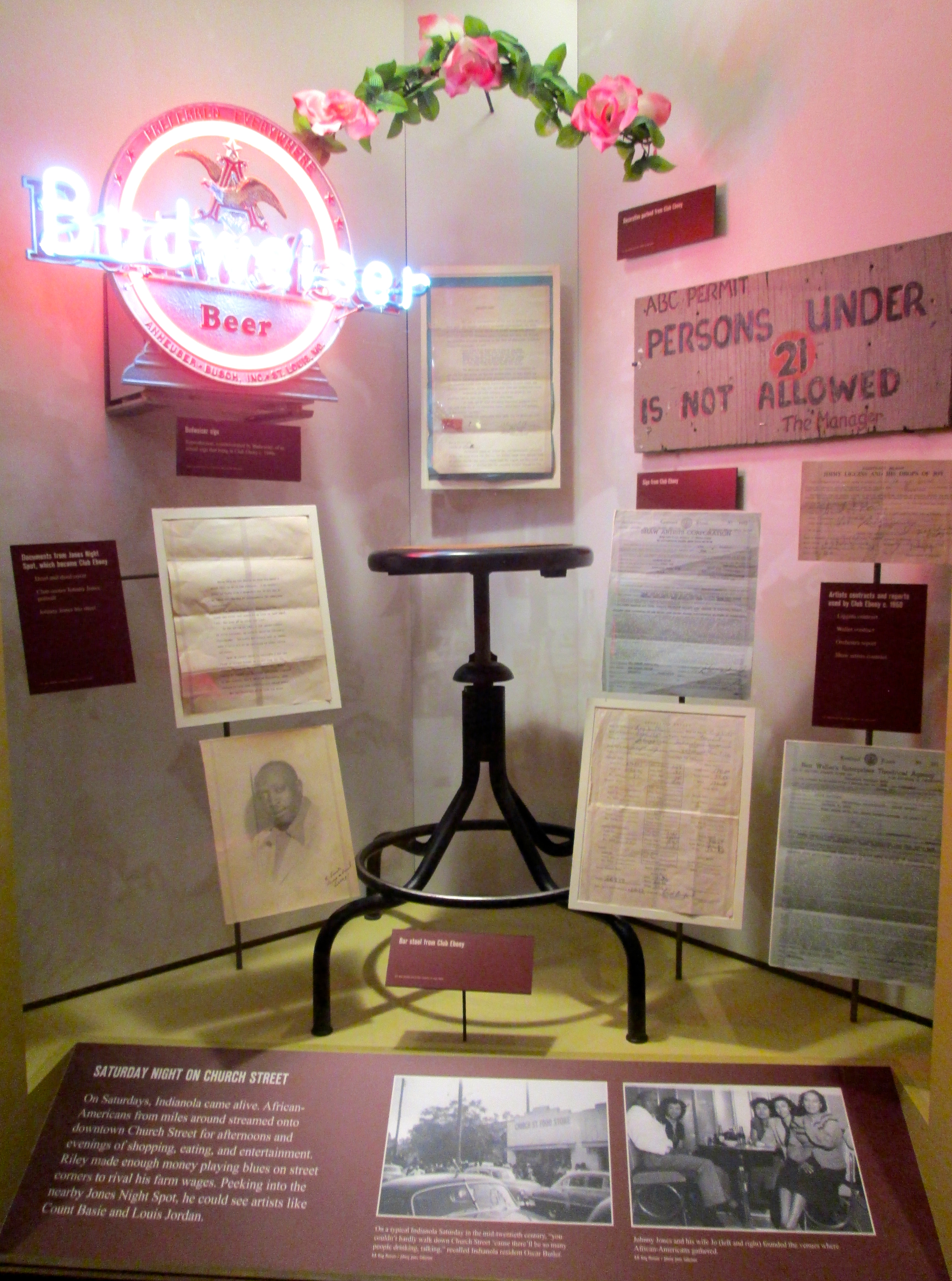
Moving through King's life, learning about his origins, gave us a new understanding of what it meant to make it on Memphis' Beale Street.


Funny story: B.B. arrived in Memphis in 1948 virtually penniless, hoping to work at black-operated WDIA radio with Nat D. Williams, legendary disc jockey, teacher, and host of the famous Amateur Night at Beale Street's Palace Theater (B.B. played it, of course). Arriving at the station, B.B. stood by as the boss told Williams the show had a new sponsor: a "tonic" called Pep-Ti-Kon. Glancing B.B.'s way, the boss said, say, can you write a jingle? By all means, said B.B., and came up with a tune extolling Pep-Ti-Kon's wonders right on the spot. You're hired!, cried the boss. A video installation shows B.B. being interviewed late in life: he was still happy to recall the Pep-Ti-Kon jingle that got him his big break. He sings it for us; it's catchy. (Who knows what was actually in the stuff!)

Wending movingly through the storied life, we find this near the end.
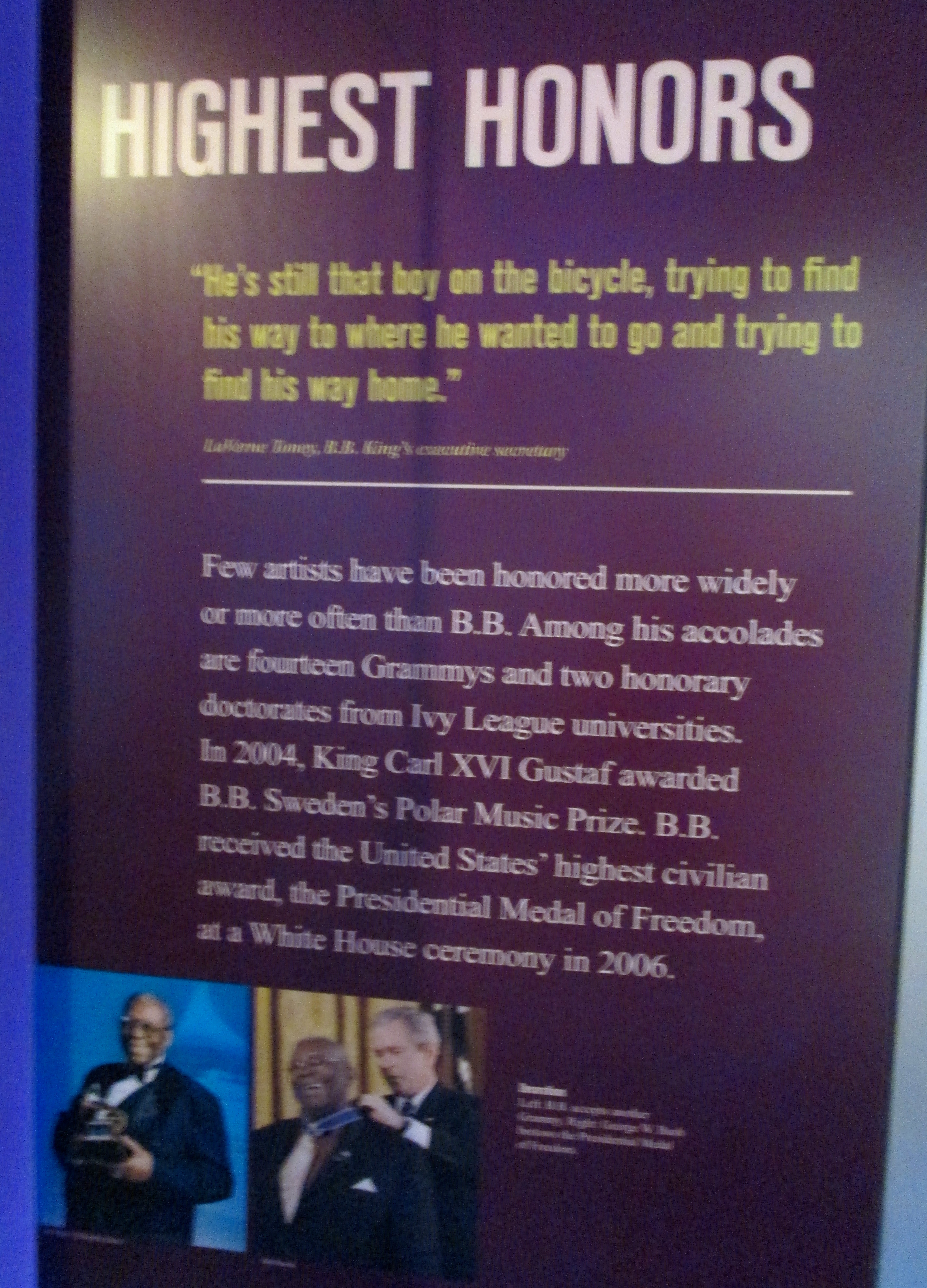
Finally, we paid our respects at the great man's final resting place, on the museum grounds.

We hopped back in the car and made it over to the corner of Church Street and Second Street. This was the curb where B.B. used to sit and play for passersby, when he was too little to get into the clubs. Ah, Church Street: Sonny Boy Williamson II used to jam in its clubs, as did the aforementioned Louis Jordan and Count Basie, not to mention Jay McShann's band featuring Charlie Parker, and many more. Little B.B. noticed he got compliments when he played gospel...but cash tips when he played blues. Blues it is, he decided. From this corner to the greatest concert halls in the world.

"On June 5, 1986, King placed his footprints, handprints, and signature in the sidewalk where he used to sing," writes Steve Cheseborough.
Indianola musician Bobby Whalen made this painting of Lucille.

We found historic Club Ebony over on Hanna Ave. Virtually every year since 1968, B.B. played the annual outdoor Homecoming concert in Indianola in remembrance of Medgar Evers. Afterwards, he'd play a set at Club Ebony, est. 1948. In 2008 B.B. bought it from Mary Shepard, who indeed shepherded the club for 34 of its most storied years. We were gladdened to see they still have live blues here.
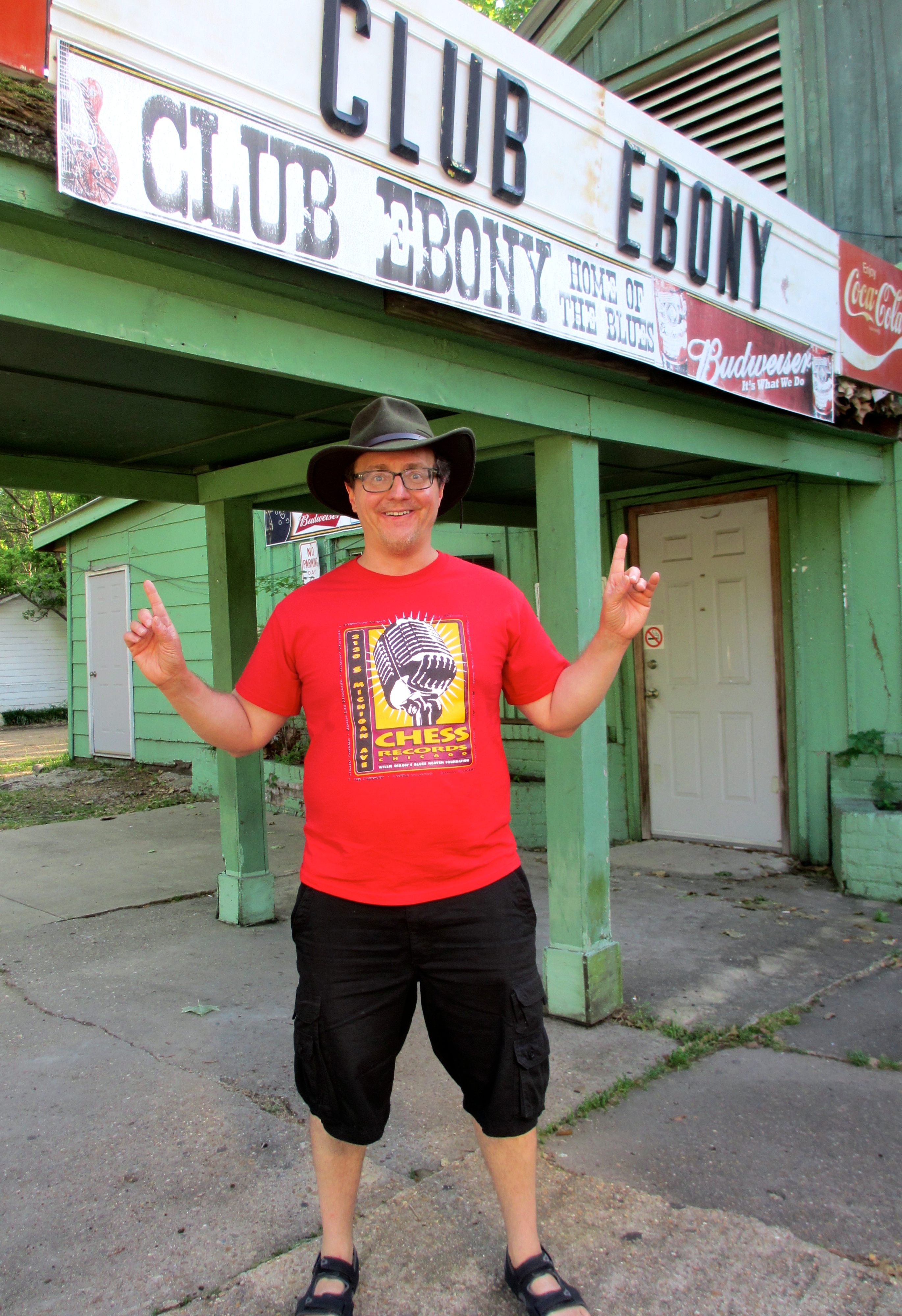
Back at our traditional Delta homebase, Clarksdale, we had to hit Red's, one of the last of the authentic juke joints. (As a side note, B.B. King was no stranger to Clarksdale. He was known for going live on the air with Early "Soul Man" Wright, one of America's first black deejays, on his pioneering blues programs on Clarksdale's WROX radio).
At Red's, "Ms. Judy" was backing it up as Anthony "Big A" Sherrod played fiery blues. Anybody who's spent an evening at Red's knows the blues is a living music.
It was on to Memphis! In 1935, David Cohn famously wrote that "The Mississippi Delta begins in the lobby of the Peabody Hotel in Memphis and ends on Catfish Row in Vicksburg." Here we were at the end of our tour, back at "the beginning" of the Delta. (As Cheseborough notes, Cohn "was not only defining the Delta's geographic limits, but also contrasting the lifestyles of those who sell cotton and those who work in the fields.")
Cheseborough also notes that the Peabody "has an important place in blues history as a site of field-recording trips by northern record companies in the 1920s and 1930s. The companies would rent a room at a hotel in a southern city, then call for blues singers for auditions and on-the-spot recording sessions." In 1929, the likes of Furry Lewis and Big Joe Williams recorded here.
Sam Phillips and Marion Keisker, whom the world will long remember as the first people to record Elvis Presley, once surpervised musical broadcasts from the Peabody Skyway, where we've spent many a happy evening (see below).

We headed out to paint the town "blues." A. Schwab Dry Good Store is one of the few remaining original buildings on Beale Street, still going strong after over 130 years. As we'd discover when we dropped in later (see below), it's no ordinary store.
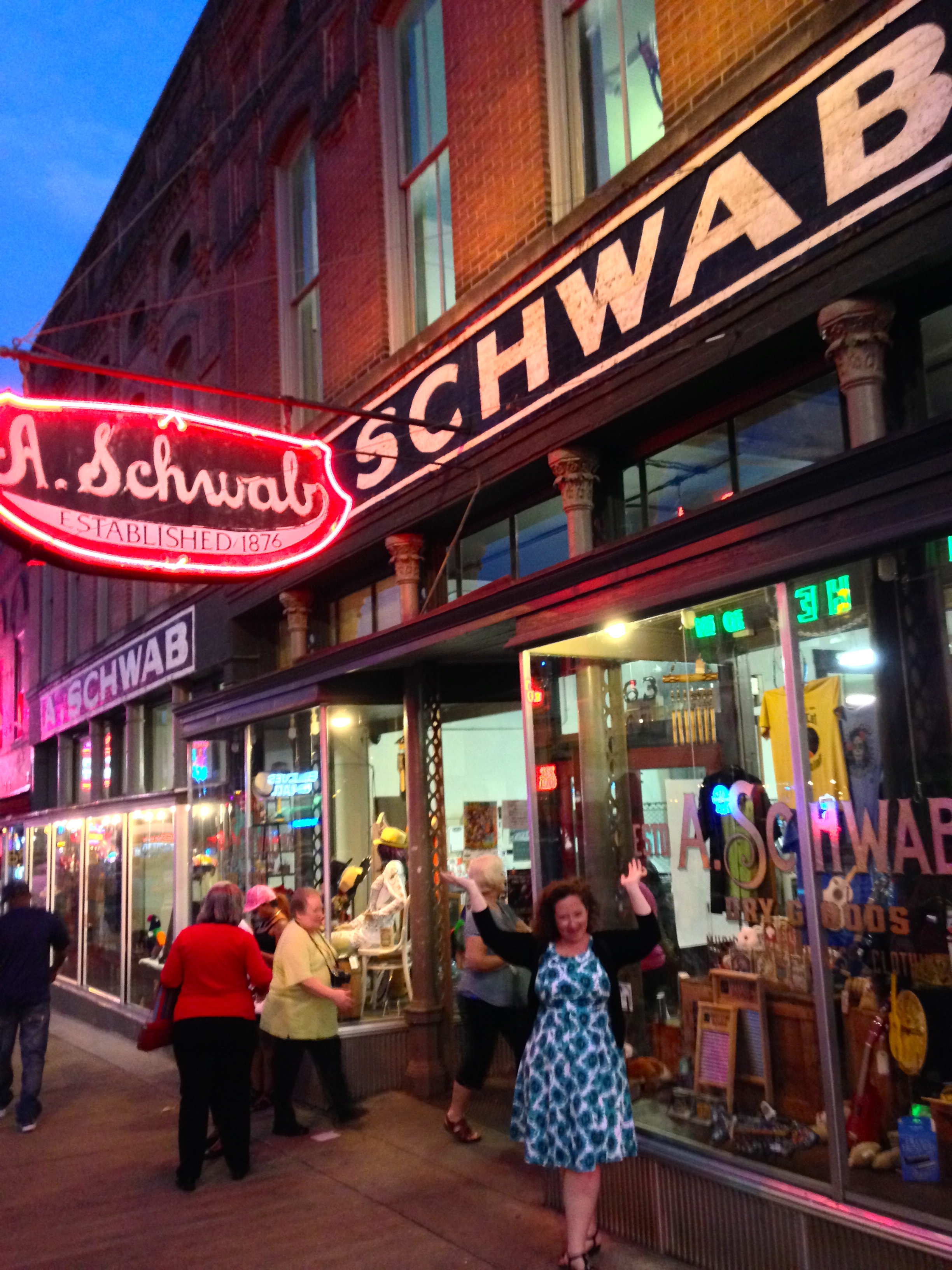
Once again, we were walking in Robert Johnson's footsteps. Did you note the King's Palace Cafe in the image of Beale Street at the B.B. King Museum, above? The Cafe is still there, and we trooped up to its upstairs Absinthe Room, which was once the black-owned Hooks Brothers photography studio. As Steve Cheseborough writes, Robert Johnson is believed to have trod these very boards himself in 1935. It's thought that that great photograph of him in a pinstripe suit on the cover of the 1990 boxed set The Complete Recordings—one of only two known photographs of him—was taken here.
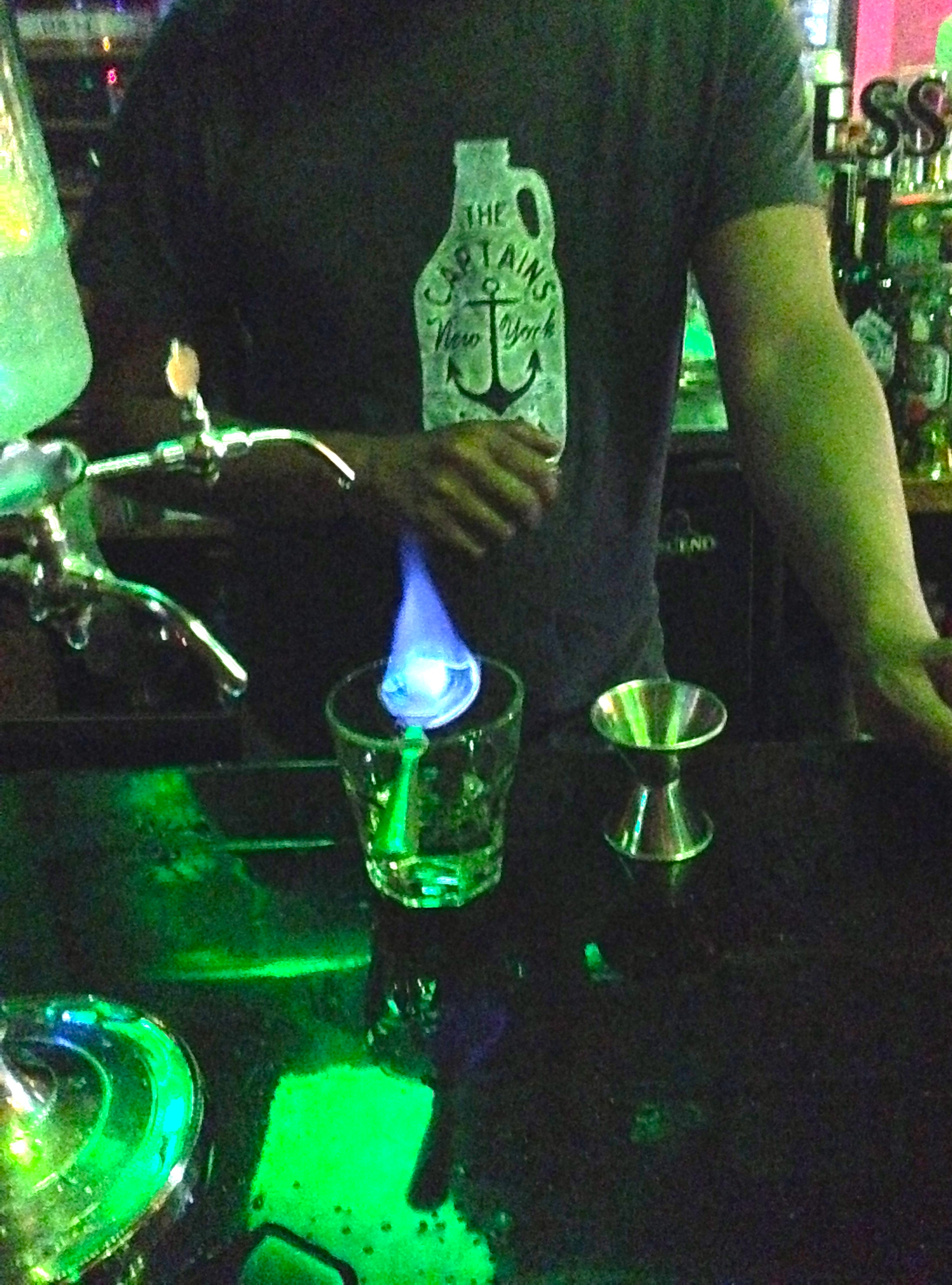
At the Rum Boogie Cafe's Blues Hall, Karolyn boogied with a new friend while we grooved to a stirring performance by Queen Ann Hines.
Next door, the Rum Boogie Cafe itself boasts the original sign from Stax studios.
The next day, we visited A. Schwab Dry Goods Store, the last of Beale Street's original businesses, est. 1876. As Cheseborough notes, their slogan was, "If you can't find it at Schwab's, you're better off without it." He also notes the store began selling voodoo supplies because people who bought blues 78s (three for a dollar) were also interested in voodoo. You've heard bluesmen sing about Mojo Hands and John the Conqueror root? Well, at A. Schwab, you can get them. (In New Orleans, we'd learned a lot about the traditional Afro-Caribbean faith of voodoo on a walking tour.) For a fascinating tale, read the "High John the Conqueror Root" display below.
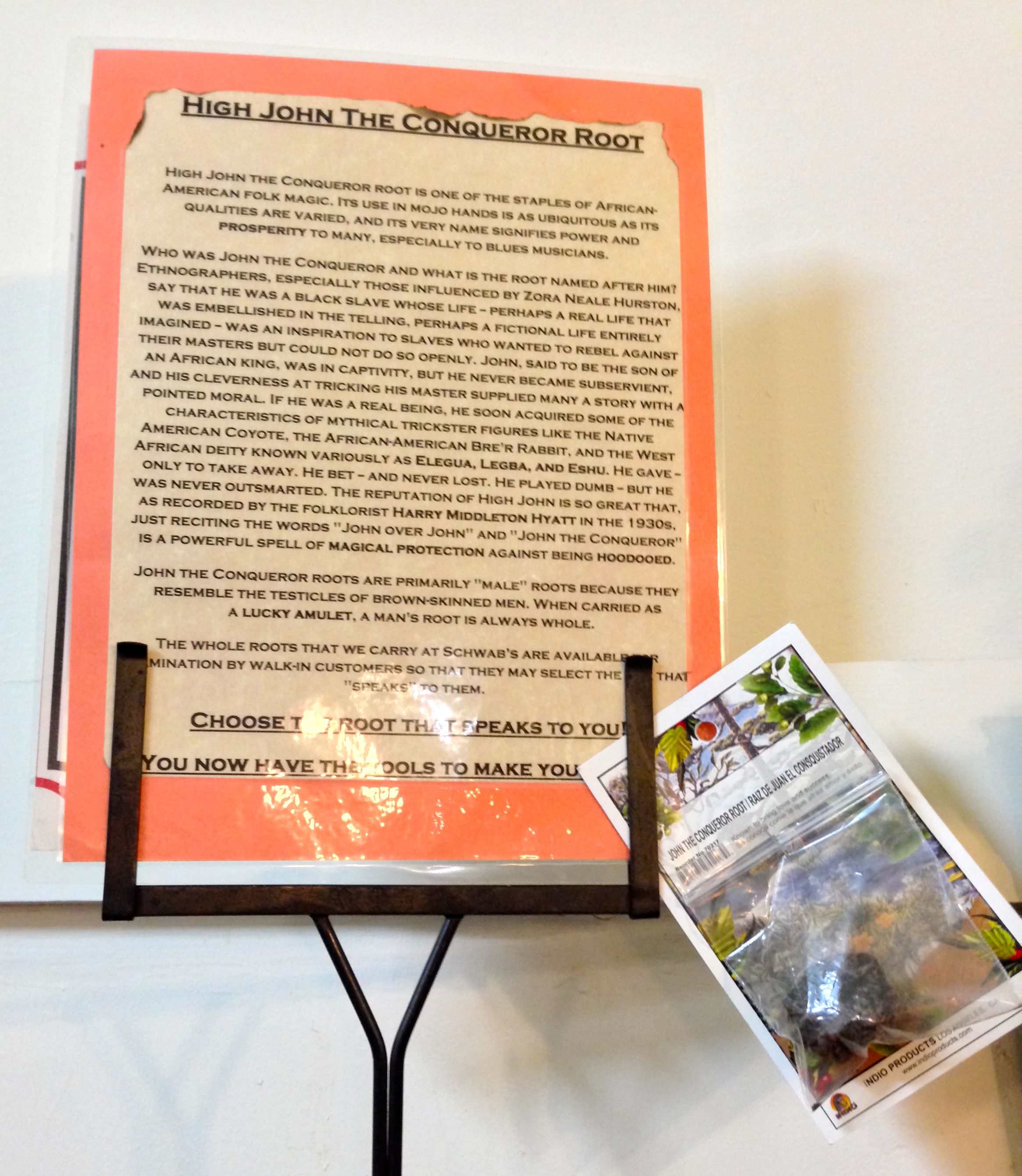
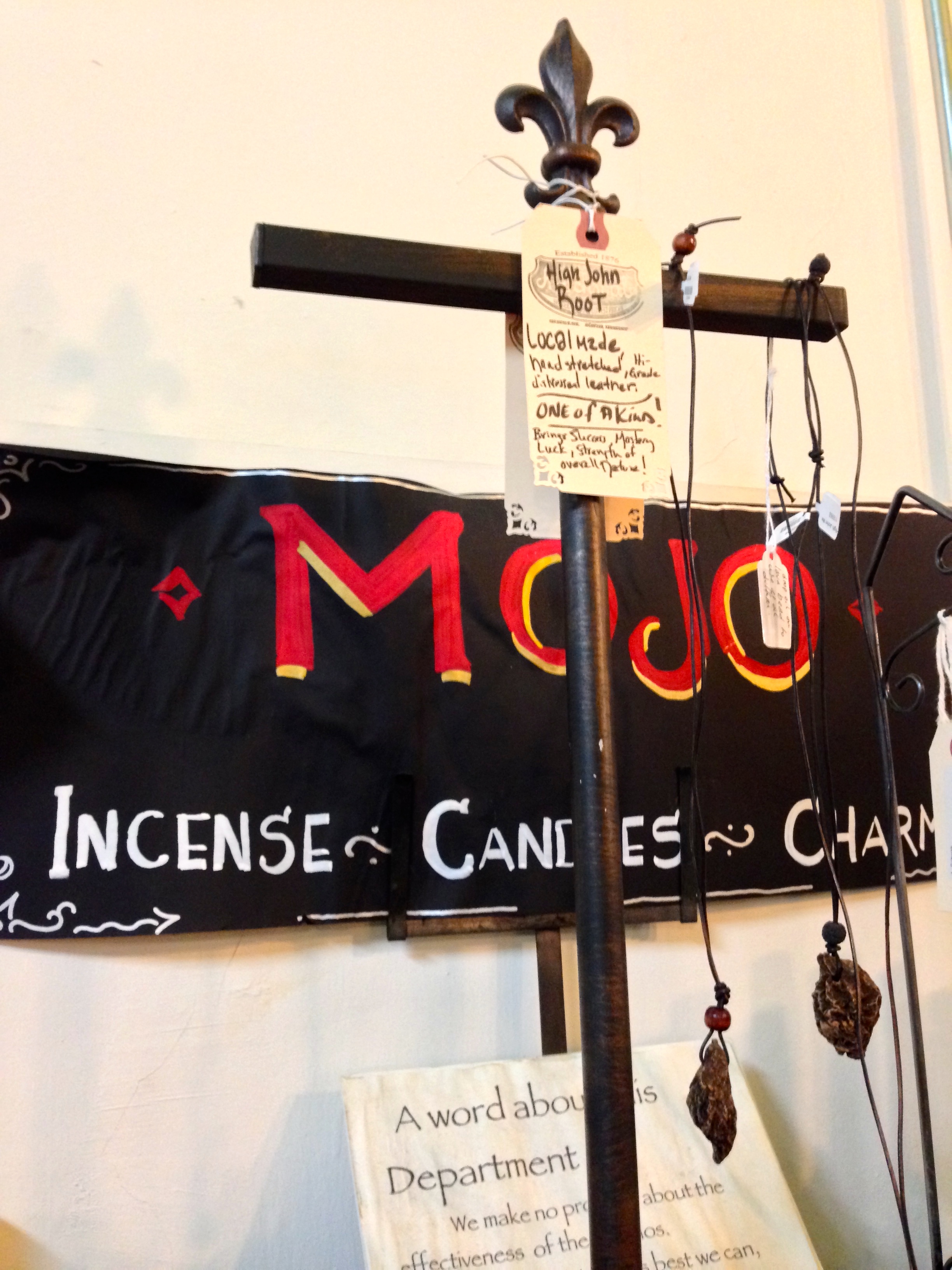
Finally, we made it over to W.C. Handy's Home, moved to Beale Street from its original location 10 blocks south. Handy—the first man to write down and publish the blues, which had previously been an oral tradition passed down from singer to singer. He moved to Memphis from Clarksdale in 1905 and lived there until 1918, when he moved to New York. We'd begun our explorations of the Delta by walking in Handy's footsteps in Tutwiler, where he "discovered" the blues, as it was played for him by a vanished bluesman at a vanished train station. We'd also traced his steps in Clarksdale, where he lived at the time of the Tutwiler discovery, circa 1903. (There's an empty lot and an historical marker where his Clarksdale home once stood.) Now, we visited his Memphis shotgun home, a small house packed with history. A highly informed guide walks you through.
We'd brought it all back home. Southern Road Trip 2017 was in the books.

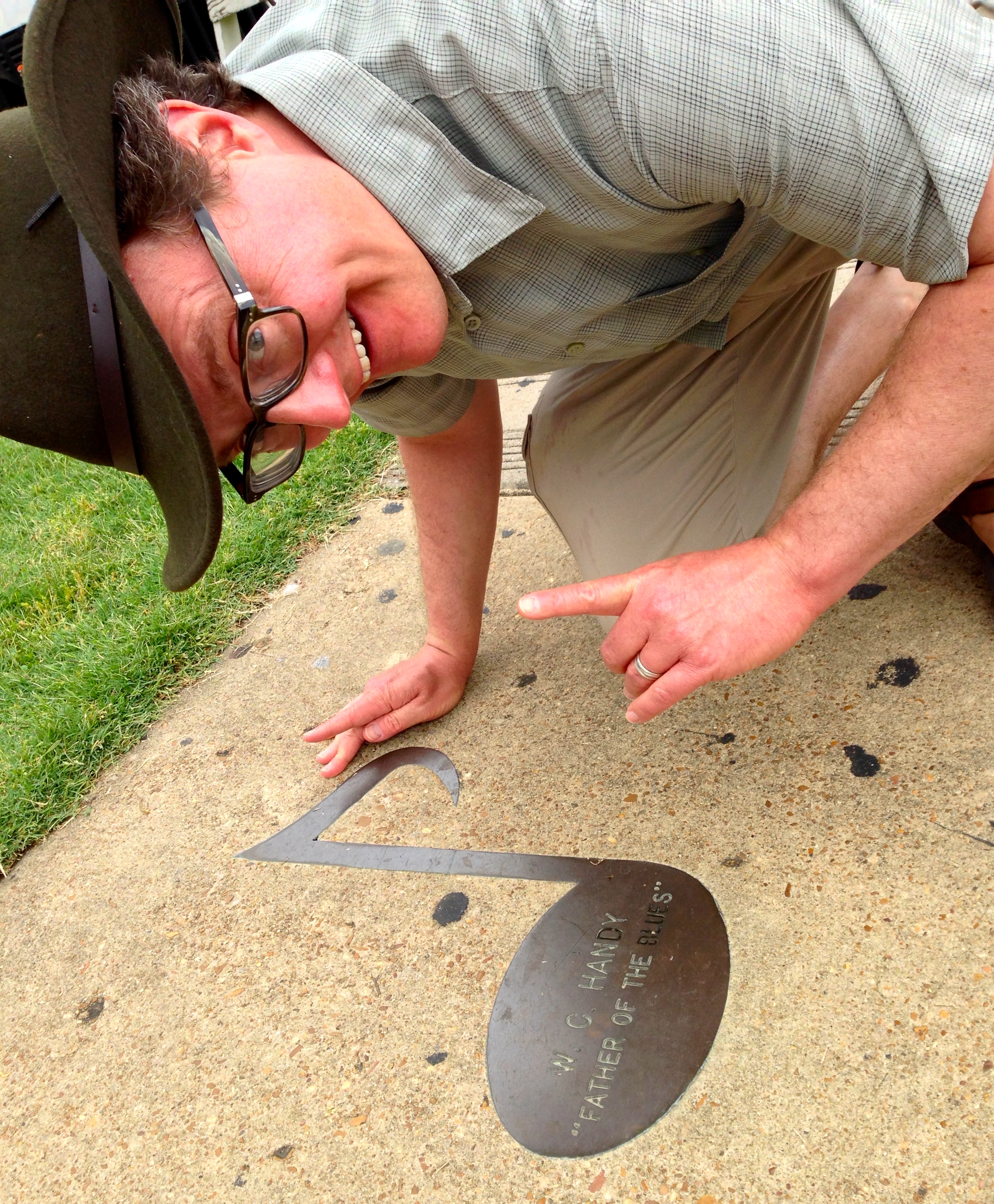
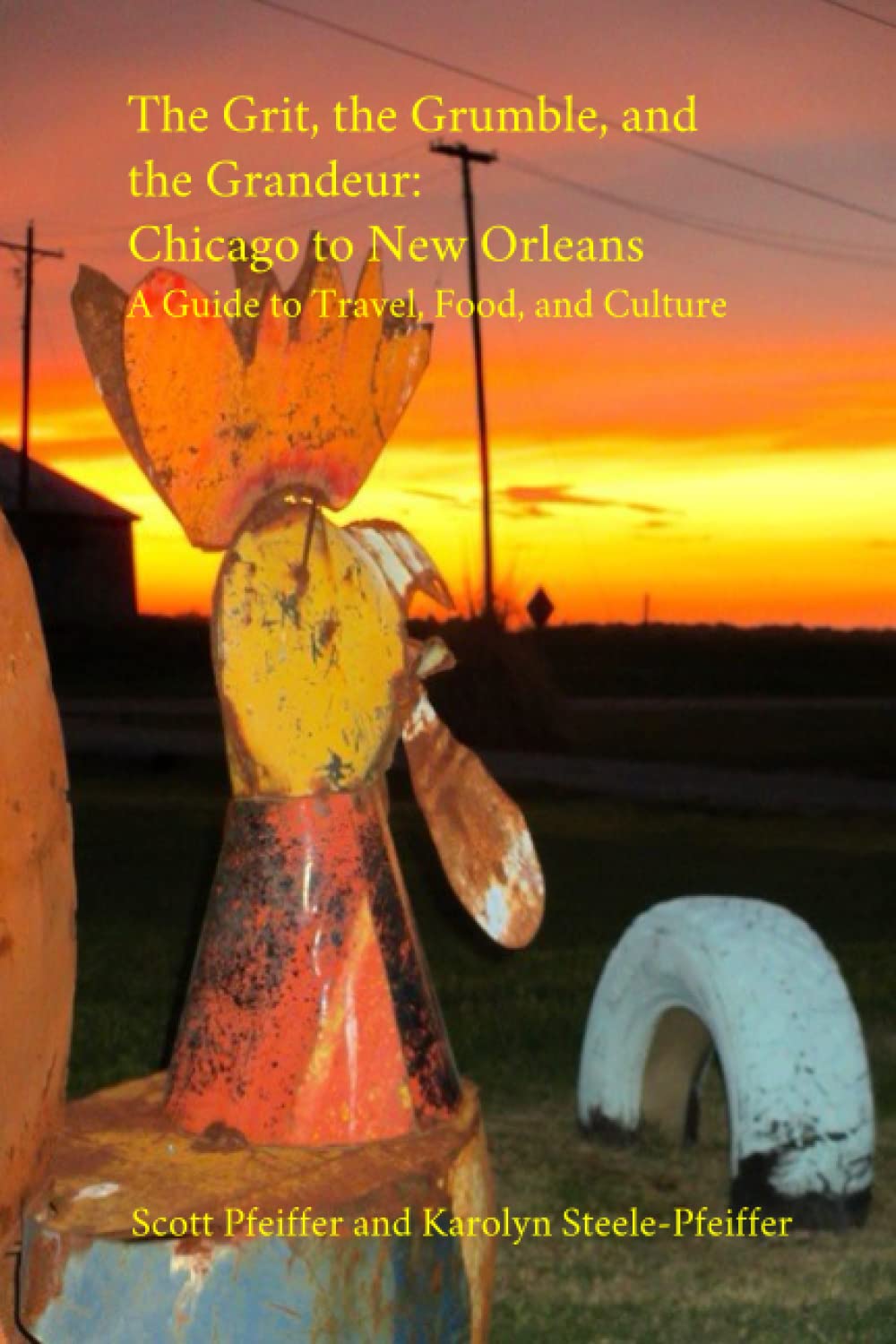

Reader Comments